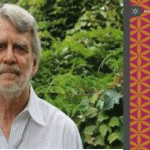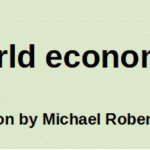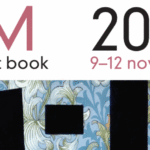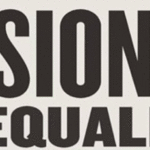 The German Revolution of 1917-1919, Part 7: The counter-revolution
The German Revolution of 1917-1919, Part 7: The counter-revolutionBy Greg Oxley
In this multi-part article, Greg Oxley looks in depth at the revolutionary period of 1917-1919 in Germany, and draws out some of the key lessons for the workers’ movement today. Part 6 looked at how the government colluded with the Army to suppress the revolution and what led the revolutionary leaders to establish the communist party (KPD). Part 7 concludes the article and looks at how the government carefully engineered a provocation of the movement in January 2019 which they followed through with the murder of many brave revolutionary workers as well as key leaders like Rosa Luxemburg and Karl Liebknecht.
**************
Only a few days after the creation of the KPD, the counter-revolution struck again. The position of the Ebert government, now without the USPD, looked extremely precarious. Ebert had even considered abandoning the capital, in the manner of Adolphe Thiers in the face of the Paris events of March 18, 1871. But he was not ready to accept defeat and, above all, he was not disarmed. On the contrary, he was preparing to deal what he hoped would be a fatal blow to the growing revolutionary threat.
The operation began with a carefully staged provocation. On 4 January 1919, the government announced the dismissal of Chief of Police Emil Eichhorn, whose forces had played a decisive role in the victory of the revolutionaries in the Battle of the Imperial Palace. The government thought that time was against it and that its difficulties would only increase if nothing was done immediately. The Freikorps, composed of resolute and hardened elite troops, were in marching order and numerous enough to potentially defeat an insurrectionary movement in Berlin. It was therefore necessary to push the enemy into premature action and crush it mercilessly.
“Someone has to be the bloodhound” (Gustav Noske)
Gustav Noske, appointed to the Ministry of Defence, was in charge of this operation. As he accepted his mission, he said, “Someone has to be the bloodhound. It might as well be me.” This project was to be portrayed as a response to a Spartacist insurrection. It involved provoking incidents that could then be presented as an insurrection, in order to justify a vigorous intervention to restore order. The Social Democrat Ernst, who replaced Eichhorn, later said: “Thanks to our careful preparations, we pushed the Spartacists into taking premature action.”
Eichhorn’s dismissal triggered an explosion of anger among Berlin workers. Eichhorn refused to leave his post. He proclaimed that he had taken it in the name of the working class and could only be dismissed by them. He would accept a decision of the Workers’ Council and soldiers, but of no other authority. Leaders of the USPD, Revolutionary trade union delegates and the KPD met to organise the defence of Eichhorn. They decided to launch a peaceful demonstration for the next day. The leaflet announcing the demonstration denounced the Ebert-Scheidemann government’s attempt to establish “a regime of coercion against revolutionary workers. The attack on the Berlin police chief will have consequences for all workers and for the revolution.”
Armed workers take to the streets

Source: Bild 183-R97817 from
Bundesarchiv Januaraufstand 1919
The reaction of the workers was tremendous. Hundreds of thousands of demonstrators – a significant section of whom carried weapons – took to the streets. Liebknecht spoke for the KPD, Däumig for the trade union delegates, Ledebour for the USPD. But the anger of the demonstrators was such that they were no longer impressed by mere speeches and denunciations. The Vorwärts premises were attacked again, and railway stations were occupied.
These activities caused concerns for the KPD leaders, who were all in favour of avoiding insurrectionary actions, whatever happened. To their minds, there was no question of pushing the confrontation to a point that would lead to seizing power, for the reasons they had explained at the party’s founding congress. The problem was that Rosa Luxemburg, Leo Jogiches, and their comrades, did not have the necessary political apparatus to supervise and control the movement, nor even the means of communicating to have their warnings understood.
As for Karl Liebknecht, he was very sensitive to the mood of the masses and tended to be influenced by the pressures of the moment. In a meeting with the KPD leaders, he voted against any attempt to seize power but seemingly thought that it might not be a bad idea, after all. This option was not the policy of the KPD leadership, but nevertheless lent strength to Ledebour and other USPD leaders who thought they could take advantage of the difficulties of the Ebert government to replace it with a USPD government, just as Ebert had replaced Prince Max of Baden during the events of 9 November.
The call for a General Strike on 6 January
As it happened, it was Liebknecht, accompanied by Wilhelm Pieck, who represented the KPD in discussions with the USPD and revolutionary trade union delegates, as part of the “united revolutionary committee” set up in the wake of the January 5 demonstration. During the meeting, the messages of solidarity, pouring in from all over the country, fuelled the frenzied enthusiasm of the participants. A leaflet produced at the end of the meeting called for a general strike for the next day (6 January) and ended as follows: “Throw yourself into the struggle for the power of the revolutionary proletariat. Down with the Ebert-Scheidemann government!”
A second leaflet, signed by Liebknecht, Ledebour, and Scholze, (but which may not have been distributed), indicated the position of the committee, in proclaiming the fall of the government (which had not yet occurred) and ending by: “We, the undersigned, provisionally assume the functions of the government.”
Liebknecht did not inform the KPD leadership of the position he had taken. Rosa Luxemburg learned about it only a week later. But Liebknecht was not the only Spartacist leader to let himself be influenced by the pressures of the moment, even if they accepted, intellectually, the official position of the party. In Rosa Luxemburg’s writings, she put forward the slogan of the overthrow of the government, but at the same time explained to those around her that this slogan was only educational or propagandistic in nature and was not presented as an immediate practical task. This nuance, easily understood in a meeting or in a congress, was completely lost in revolutionary tumult of the masses in action.
Luxemburg warnings about the counter-revolutionary threat
In any case, once the movement was underway, Luxemburg saw no alternative but to strive for it to succeed. On January 7, she denounced the indecision of the USPD leaders who quickly moved over to the demand for a “negotiated truce.” This was impossible, in any case, and she warned workers of the imminence of a counter-revolutionary assault. She concludes: “Act! Act! With courage and firmness, this is the unavoidable ‘cursed’ duty of all revolutionary trade union delegates and the sincere leaders of the USPD. Disarm the counter-revolution! Arm the masses! Occupy all positions of power! Act immediately!
How could the worker reading this possibly see any difference with the policy of Liebknecht and Ledebour? Radek, for his part, supported by Jogiches and Levi, believed that the party’s propaganda should be brought into line with his analysis, that the hard truth should be told to the workers, and that efforts should be made to put an end to the movement.
Luxemburg, on the other hand, agreed that the premature nature of the movement and the indecisive nature of the leadership doomed it to failure, but she could not bring herself to ask the workers to call it off. It is true that Radek’s position was also fraught with dangers, since, with the struggle now well and truly underway, the most resolute elements among the workers would have continued to fight, regardless of the KPD’s line, putting the communists in the dubious position of abandoning them to their fate.
Workers turned out massively for the general strike. But the “revolutionary committee” wavered. It did not know what to do with the movement. Its 52 members (far too many to lead the insurrectionary movement it had called for) debated incessantly without reaching any clear conclusions about the burning issues of the day.
The ‘revolutionary committee’ was “still deliberating” the next morning
A later account by Paul Levi describes the reality of this so-called revolutionary leadership: “What was experienced on Monday in Berlin was perhaps the greatest proletarian mass action in history. […] From the statue of Roland [in front of the City Hall] to the statue of Victory [on Königsplatz] the proletarians stood in closed ranks. They had brought their weapons with them; they were flying their red flags. They were ready to do anything, to give everything, even their lives. There was an army of 200,000 men such as Ludendorff had never seen. It was then that the unbelievable happened. The masses were there very early, since 9 a.m., in the cold and fog. […] The fog was clearing, and the masses were still waiting. But their leaders were deliberating. Noon arrived and, in addition, the cold and hunger. And still their leaders deliberated. The masses were wild with excitement. […] Their leaders were deliberating. At dusk, the fog thickened again. Sadly, the masses began to drift away: they had hoped for some great action and yet they had done nothing. And still their leaders deliberated. They sat into the evening, and they sat all night, and they deliberated. And the next morning, at dawn, they were still deliberating.”
The reality was that the KPD did not have a strong enough foothold in the movement to give it the necessary cohesion and programmatic and strategic direction. Even within the KPD, as we have seen, the views of leaders like Rosa Luxemburg were not unanimously accepted.
The prevarication of the USPD and “revolutionary committee”, together with the lack of a sufficiently audible alternative leadership, could only facilitate the task of the counter-revolutionary forces, which, unlike the revolutionaries, were endowed with a single command structure and a very precise idea of their objectives. The Republican Soldiers’ Corps was also ready to defend the government. The Naval Division declared its neutrality. In the space of a week, with the help of loyal detachments in the capital, the government was able to change the balance of power in its favour.
The Freikorps leads the brutal attack on the movement

When the Freikorps entered the city, it was no longer a question of containing the revolution, but of crushing it. To the applause of the conservative press, the workers were brutally massacred. In many instances, prisoners were lined up against a wall and shot. Revolutionaries who tried to surrender were killed on the spot. In the midst of this bloody repression, on 13 January, Vorwärts went so far as to lament the absence of “Karl, Rosa and Radek” among the piled-up corpses.
Karl Liebknecht and Rosa Luxemburg did not want to leave the capital. They took refuge in an apartment, from where Rosa continued to edit texts for Die Rote Fahne. On the 15th, they were arrested, along with Wilhelm Pieck, and transferred to the Hotel Eden, which served as the Freikorps‘ headquarters. After questioning, Rosa was hit with a rifle butt, then shot in the head and thrown into the canal. Liebknecht was also hit in the back of the head with a rifle butt and finished off in the Tiergarten Park.
Lessons from the July Days of the Russian Revolution
In July 1917, the Bolsheviks had to deal with a situation similar to that of January 1919 in Germany. There, too, a provocation by the government triggered mass action with the aim of seizing power. Lenin and Trotsky were firmly convinced that an attempt to overthrow the government would be premature. Despite their efforts, the Bolsheviks could not prevent the movement. But they couldn’t stand aside either. They therefore decided to participate in the armed demonstrations by providing slogans and instructions to channel the movement and prevent a direct armed confrontation with the government.
The difference between the two episodes was that politically, the KPD, unlike the Bolsheviks, did not make it clear in its written propaganda and in its interventions in the factories and in the streets that it was against the transformation of the struggle into an insurrection, let alone why it was against it. The virulent tone of Rosa Luxemburg’s articles in Die Rote Fahne was hardly likely to restrain the revolutionary momentum of the movement. On the contrary, it said it was in favour of the overthrow of the government, and the stipulation that this overthrow was not to be considered as an immediate task was not clearly perceptible.
A second difference was that the Bolsheviks of 1917 had roots in the movement and political authority among the advanced layers of workers, soldiers, and sailors, to a much greater degree than the KPD in 1919.
The revolutionary movement ebbs
Outside Berlin, during the month of January, the revolution was unfolding along similar lines to the events in the capital, despite the diversity of situations. But these were essentially defensive movements, generally limited to armed demonstrations and occupations, without any specific objectives, before fading out in the face of vacillating leadership and betrayal by “socialist” authorities, followed by armed repression. In the following months, the nature of the struggle changed, with fewer demonstrations, less openly political demands and more bitterly fought and tenacious strikes, with a sharp increase in trade union membership. For the whole of 1919, 4,970 strikes were recorded, involving more than 50,000 enterprises. In 1920, there were 8,800 strikes involving nearly 200,000 enterprises.
The first phase of the revolution had solved nothing. The overthrow of the Kaiser turned out to be a largely illusory “victory”. Monarchy and republic were shown to be but different masks of the same infernal system. Economic collapse, famine and mass unemployment meant unbearable living conditions for the working people. In Berlin, the number of unemployed rose from 180,000 in January to 500,000 in March.
The loss of Karl Liebknecht and Rosa Luxemburg dealt a terrible blow to the KPD leadership. Other losses were to follow. Franz Mehring died at the age of 72 before the end of January. Johann Knief died of tuberculosis. Leo Jogiches, arrested in March, was assassinated. Eugen Levine was shot on July 5, 1919, in Bavaria, where several hundred communist militants were summarily executed. Today, the deaths of Rosa Luxemburg Karl Liebknecht are rightly commemorated, but let us not forget the thousands of other equally courageous revolutionaries who fell under the bloody repression of those fateful weeks.
Defeats follow in Austria and Hungary

The defeat of the uprisings in Austria and Hungary in June and August 1919 marked the end of the post-war revolutionary wave in Central Europe. Nevertheless, in Germany, the defeat of January 1919, although severe, was only the end of the first phase of the revolution. The workers’ capacity for resistance was not completely destroyed. A new revolutionary opportunity presented itself in 1923.
But the reaction, also, was getting organised and preparing an even more brutal reckoning with the revolutionary movement. The Social Democratic leaders worked hand in hand with German militarism to crush the Spartacist threat. They greatly contributed to setting in motion the counter-revolutionary steamroller whose aim was not limited to the crushing of revolutionaries alone.
A few weeks after the deaths of Luxemburg and Liebknecht, General Ludendorff, returning from a stay in Sweden, said to his wife: “It would be the greatest stupidity on the part of revolutionaries to leave us alive. If I ever return to power, there will be no forgiveness. Without the slightest scruple and with a clear conscience, I would hang them all, Ebert, Scheidemann and company, and it would greatly amuse me, just to watch them dance at the end of a rope.”
The Trades Unions grow and the workers continue to fight
These words leave no doubt as to the hatred that the General Staff harbours, not only for the revolutionaries, but also for the social democratic leaders who agreed to massacre the workers to safeguard the established order. However, the hour of the final victory of the counter-revolution had not yet struck in 1919. The months and years to come would demonstrate this.
Far from being crushed, the German workers acted time and again to fight off successive attempts of counter-revolutionaries to subjugate them. The membership of the unions increased massively. Several general strikes were called, including the one that defeated the putsch led by Wolfgang Kapp and General von Lüttwitz in March 1920. At the time of this putsch, aimed at overthrowing the Ebert government, the latter did not organise any resistance. It simply fled. The military occupied the Chancellery. It was the workers who drove them from power and prevented a military dictatorship.
During this period of intense struggle, the KPD became a real mass force. Between 1919 and 1923, even though the resistance of the workers did not succeed in definitively removing the threat of counter-revolution, it was equally true that the reaction did not succeed in breaking the workers’ movement.
The German ruling class turns to fascism
The year 1923 presented a new revolutionary opportunity – and perhaps even two – which might have brought victory. Tragically, however, they were missed. It was in the aftermath of this latest defeat that the capitalist class in Germany decided that it was necessary to destroy any possibility of workers’ resistance in the future, through the total destruction of their organisations and the suppression of all forms of democratic expression.
To this end, they financed the arming and organisation of the forces led by Adolf Hitler, who came to power as Chancellor in January 1933, and rapidly consolidated his fascist dictatorship in the following months. Fascism annihilated the German workers’ movement and sowed terror, destruction and death on a scale unprecedented in the history of mankind. Such was the price of the revolutionary failures of 1919 and 1923. Rosa Luxemburg had warned that the near future would see “socialism or barbarism”. How right she was.
 Marx’s value theory and the value form interpretation - By Michael Roberts This post is long but something well worth reading during the festive break. As I mentioned in a recent blog, at the
Marx’s value theory and the value form interpretation - By Michael Roberts This post is long but something well worth reading during the festive break. As I mentioned in a recent blog, at the Why real-world economics matters - By Michael Roberts Last weekend, I delivered a keynote lecture to economics students at Britain’s Open University on their Economics Day. The venue was at
Why real-world economics matters - By Michael Roberts Last weekend, I delivered a keynote lecture to economics students at Britain’s Open University on their Economics Day. The venue was at Historical Materialism conference 2023: review of proceedings - Value, profit, technology and value again By Michael Roberts Editorial note: Left Horizons is pleased to re-publish the regular blogs from Michael Roberts. His economic
Historical Materialism conference 2023: review of proceedings - Value, profit, technology and value again By Michael Roberts Editorial note: Left Horizons is pleased to re-publish the regular blogs from Michael Roberts. His economic Book review: Visions of inequality - By Michael Roberts In this next of a series of reviews of some important books published this year, I look at Branco Milanovic’s Visions of
Book review: Visions of inequality - By Michael Roberts In this next of a series of reviews of some important books published this year, I look at Branco Milanovic’s Visions of Book review: 50 years of dependency theory - By Michael Roberts Over the next few posts, I aim to review a number of books published in the last year on key aspects of
Book review: 50 years of dependency theory - By Michael Roberts Over the next few posts, I aim to review a number of books published in the last year on key aspects of

